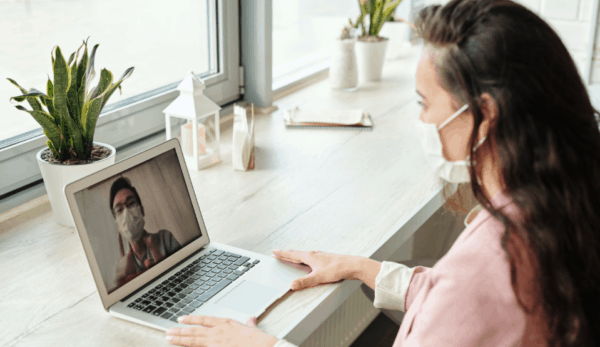|
Optum Goes DTC | Successful Remote Patient Monitoring
August 18, 2021
|
|
|

|
|
Together with
|

|
|
|
“I think the reality is, you’ve got a $4 trillion [US healthcare] market, of which I think about 80% of healthcare delivery is going to be moving toward essentially a delivery service that looks like Hims & Hers in the next 5 or 10 years. So this market is massive.”
|
|
Hims & Hers CEO Andrew Dudum during the company’s Q2 2021 earnings call.
|
|

|
|
Optum, a subsidiary of UnitedHealth, recently began selling prescription medications online directly to patients. The company also began offering telehealth services to provide prescriptions to treat depression, erectile dysfunction, and other common illnesses – directly challenging startups such as Ro and Hims that offer online access to drugs for many of the same ailments.
UnitedHealth is the most profitable US healthcare company, with net income totaling $15.8b in 2020, and Optum is its fastest growing business segment. The company has expanded far beyond its payer roots and now employs or contracts over 50k physicians.
Optum launched its online storefront in November 2020 before adding pharmacy and healthcare services in June. It’s recent redesign and cash payment options make it more friendly to digitally native consumers.
- The Strategy – More Americans are paying directly for healthcare, and by offering cash services to either uninsured or budget-constrained patients, Optum is increasing access to healthcare.
- The Real Strategy – Optum’s entrance into the direct-to-consumer world defends against rising competition from retail giants such as Amazon and Walmart, both of which have launched digital pharmacy options as membership incentives.
The Takeaway
UnitedHealth’s largest competitive advantage is its vertical integration. It operates the largest US commercial insurance provider, a substantial pharmacy benefits manager, and is one of the biggest employers of physicians in the country. It’s recent expansion deepens this integration, while keeping patient money in-house amid a sea of new competition.
|




|
|

|
|
Mayo Clinic recently published a new study of its remote patient monitoring (RPM) program for ambulatory care of COVID-19 patients (n = 7,074), aimed at reducing acute care utilization and hospital admissions.
The program included two care-delivery models based on patient risk, enabling RPM-registered nurses to respond to technology-generated alerts and deliver standardized care for clinical assessments and patient management.
Low-Intensity Care Model (n = 2,314)
- Patient had no risk factors for severe illness and low symptom burden
- Mayo provided thermometer and pulse oximeter
- Patient reported symptoms twice daily
- 1:50 nurse to patient ratio
High-Intensity Care Model (n = 4,760)
- Patient had 1+ risk factors for severe illness and moderate-to-high symptom burden
- Mayo provided LTE-enabled tablet, thermometer, pulse oximeter, blood pressure monitor
- Patient reported symptoms twice daily
- 1:30 nurse to patient ratio
Results
Among all patients, ED visit and hospitalization rates within 30 days of enrollment were 11.4% (low-intensity) and 9.4% (high intensity), with a 30 day mortality rate of 0.4%. The RPM engagement rate was above-average at 78.9%, supporting recent changes to the CMS physician fee schedule to expand reimbursement for RPM services to patients with acute conditions.
The Takeaway
The study suggests that RPM for management of COVID-19 is associated with “excellent clinical outcomes,” especially among patients at risk for severe illness.
Given that Mayo Clinic’s RPM program was part of a retrospective cohort study, it remains unknown how the results compare with “usual care,” but a matched case-control study is planned to evaluate the program.
|




|
|
Nuance’s Patient Engagement Must-Haves
Consumer demands are shifting, and they’re looking to get more out of their digital health technology. Nuance outlines the 5 must-haves for your patient engagement strategy here.
|
|
- Telehealth Fraud: The National Law Review recently reported that rising telehealth usage is creating more openings for bad actors, causing over $6b in fraud losses since the beginning of the pandemic. Three telehealth companies were charged in May for their alleged participation in a $46m fraud pushing unnecessary cancer genetic tests on Medicare beneficiaries without any prior relationship, testing, or treatment follow up. The report recommends offering whistleblowers 15% – 25% of recovered payments to help combat rising fraud.
- Unicorn Maven: Virtual women’s care provider Maven Clinic recently raised $110m of Series D financing at a valuation of over $1b, making it the sector’s first “unicorn.” The company, now with over $200m in total funding, plans to use the capital to expand into new patient populations and invest in improving its fertility, maternity, parenting, and pediatric offerings.
- The Delta Slowdown: During its Q2 2021 earnings call, Amwell said that it anticipates fewer telehealth visits through the fall and winter as a result of the ongoing surge in delta variant cases. Although the pandemic originally led to a sharp rise in telehealth usage, Amwell stated that coronavirus-related protections such as mask wearing and social distancing will likely lead to a weaker than expected cold and flu season.
- Automated Screening: The University of Toronto recently studied two weeks of smartphone data from volunteers to validate its use in screening for generalized anxiety disorder (GAD), social anxiety disorder (SAD), and depression. The study found that models of SAD and depression utilizing the data achieved a significantly greater screening accuracy than uninformative models, indicating that smartphone-collected data may contain sufficient information for detecting common mental health disorders without the need for clinician involvement.
- RevSpring Expansion: Healthcare payment solution provider RevSpring recently debuted a trio of new offerings, including: PersonaPay (automated collections task prioritization), Arrived (automated patient intake), and OmniBrain (automated cohort-based patient engagement). The automation theme is clear in RevSping’s new launches, each seeking to increase efficiency by taking over labor-intensive processes.
- Telehealth’s Hidden Costs: A new study from the University of Michigan found that physician-led in-person visits cost health systems an average $26.84, compared to $27.26 for virtual visits. While video visits were more efficient for patients, physicians spent more face-to-face time in video visits than in-person visits, challenging claims that telehealth increases daily patient volume.
- Talkdesk Goes Global: Talkdesk is now valued at more than $10b after closing its $230b Series D ($497.5b total funding), a result of its growing share of the contact-center-as-a-service market. The company announced that the funding, along with its newly-appointed CFO Sydney Carey, will help to expand its international presence and address the worldwide demand for cloud contact center solutions.
- Prisma Health & TytoCare: Prisma Health recently announced a new partnership with TytoCare to provide patients with a handheld kit for remote medical exams. TytoCare’s handheld kits allow patients to self-examine their heart, ears, throat, lungs, and temperature – enabling doctors to remotely diagnose and treat patients during Prisma Health telehealth visits.
- eHealth Usability: A new study published in JMIR analyzed 8 datasets to develop an ontology of usability problems for eHealth applications with patients as the end users. The study classified 400 usability problems into 8 main categories (performance, task-technology fit, accessibility, interface, navigation, terminology, support, satisfaction), which can be used to support new eHealth tool development with a complete classification of end user problems.
- CONNECT Act: The Creating Opportunities Now for Necessary and Effective Care Technologies (CONNECT) for Health Act is gaining public support among new advocates such as Zoom, which called the legislation a “milestone in terms of access” in a recent letter to Congress. The CONNECT Act would amend the Social Security Act to remove geographic restrictions on telehealth services and permanently expand Section 1135 reimbursement waivers.
|
|
|
|
|